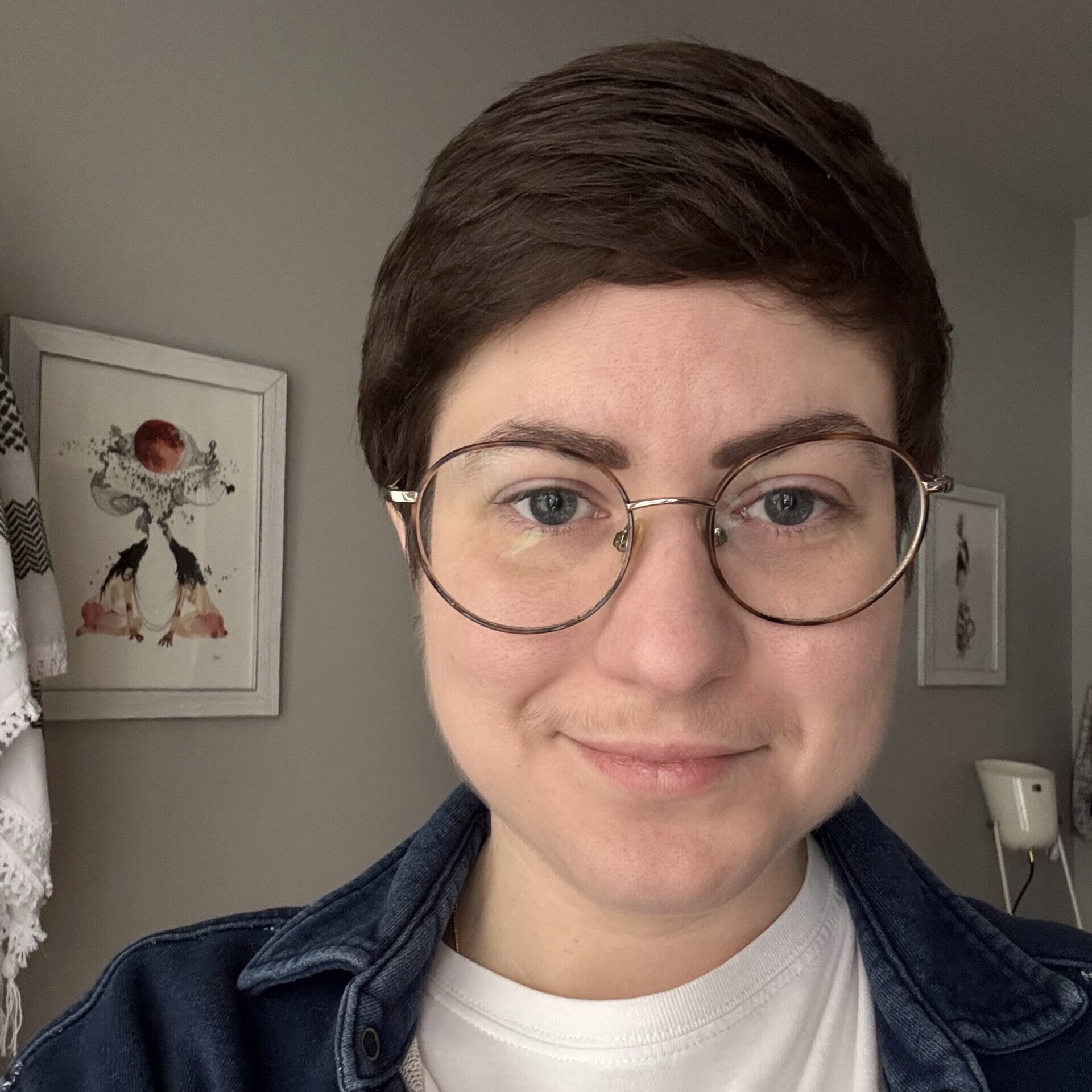I have spent the last couple of weeks surveying online discussion forums populated by self-identified “incels,” a community of categorically straight men who claim their “involuntary celibacy” as a condition of oppression.
Users pose such questions as whether someone would “care if the girl cums or enjoys herself,” should they finally manage to get sex, the poster himself offering the opinion that it would be more enjoyable “if it was painful and no fun for her … tbh..” Others chimed in, a chorus of no’s in agreement.
Journalists allege that these discussion threads were once rated more PG, more lonely hearts club for beta males and less violent misogynists’ homegrown Pinterest board for swapping recipes for rape. But what I see today, and saw within minutes of an initial scan, are discussions such as this one:
A user named “Captain” posts: “I have a house inspection and stacy has to come and laugh at my living conditions. Might rape her tbh tbh.”
I’m reminded of the increasingly relevant Margaret Atwood line: “Men are afraid that women will laugh at them; women are afraid men will kill them.” Or, just rape them. tbh tbh.
A username spelled out in Cyrillic characters replies: “Volcel if you don’t.” As in, “Captain” is a voluntarily celibate instead of an involuntary one and gains no group sympathy if he doesn’t rape his home inspector.
Another user, “Legend,” adds: “How could you not rape her?”
I have seen proposed longcons of adopting and homeschooling a little girl and training/forcing her to be your housewife/sex slave/gf/choose your own misogynist misadventure.
The tone and content ranges from joking-not-joking hyperbole and memes to exhaustive rape/murder/sex slavery tactics, all the way to congratulating mass murderers for killing normies and Stacys. One user recommends catfishing lonely women on Tinder in order to convince them to kill themselves. Another praises Toronto incel Alek Minassian’s van strategy, explaining that using guns is so “expected,” and that normies “need to be in constant fear for EVERY ASPECT OF THEIR LIFE.” The underlying themes of misogyny, and unceasingly violent misogyny at that, never vary, although occasionally they are joined by racist/white supremacist/blatantly neo-Nazi sentiments. (Many a user includes a xenophobic signoff for each post, like how we program our phone numbers or job titles as email signatures, only theirs advertise a neo-Nazi agenda and maintain their total anonymity.)
In an article published on April 25, two days after the deadliest incel attack to date, Vox senior reporter Zack Beauchamp explained incel activity as “a new kind of danger, a testament to the power of online communities to radicalize frustrated young men based on their most personal and painful grievances.”
Their most personal, painful grievance is not being fucked by age 21. Mine is having been fucked without my consent by age 21.
Of course, some members of the incel community would call their unifying thread “support,” as one user wrote in the subreddit r/Braincels in a post titled “Crying Every Day.” “I know I am genetic trash,” he wrote, “and will never have a woman to love me.” He then thanked the community for its “daily support through memes and compassion.”
“They’re just lonely, desperate men on the Internet,” people have said. Hosts of incel discussion forums such as Reddit and 4chan tolerated their misogynist echo chamber for years, perhaps out of some mixture of duty to the First Amendment and the belief that incels weren’t serious.
Now we have a body count.
In an article for The New Yorker published earlier this year titled “The Rage of the Incels,” Jia Tolentino claimed that “the incel ideology has already inspired the murders of at least sixteen people,” referring to the combined murders of the Toronto and Santa Barbara killings within the last four years.
I consider the number to be even higher.
On April 23, 2018, Alek Minassian drove a rented van along two kilometers of Yonge Street in Toronto, killing 10 people and injuring 16 more, predominantly women. About an hour before the massacre, he posted to his Facebook page: “The Incel Rebellion has already begun! We will overthrow all the Chads and Stacys! All hail the Supreme Gentleman Elliot Rodger!”
He was referring to 22-year-old self-identified incel Elliot Rodger, who went on a murderous rampage near the University of California, Santa Barbara campus in Isla Vista four years earlier, on May 23, 2014. Just before his killing spree, Rodger had uploaded a YouTube video titled “Elliot Rodger’s Retribution,” which cites the attack’s motivation as payback for women having rejected him, and for the sexually active men presumably enjoying a better life than he had. A “manifesto” emailed to family members and acquaintances after the video release further fleshed out Roger’s intentions to “attack the very girls who represent everything [he] hate[s] in the female gender: the hottest sorority of UCSB.” Ultimately, he killed six people and injured 14 others during his “War on Women”
But before the bloody spree’s sexist impetus could dominate mainstream discussions, the “not- all-men-are-like-that“ red herring barged in, redirecting attention from the culture that incubates such reprehensible behavior to an irrelevant argument predicated on preserving men’s dignity and comfort. Twitter and other social media outlets erupted with the hashtag #NotAllMen, which purported that not all men share Rodger’s prejudices, nor would all men commit such heinous crimes. That man was “deranged,” the media clamored: an outlier. But those highlighting the not-uncommon trajectory from misogynist polemic to misogynist violence weren’t suggesting that the behavior is typical of all men — and framing the killings as anomalous only serves to disguise the true wingspan of the vulture of sexism that stalks our culture.
This deranged outlier, Rodger, is worshipped by literally thousands of other so-called outliers on incel forums across the Internet, and his mass murder is remembered and celebrated every year on May 23. The Southern Poverty Law Center claimed Rodger as the first terrorist of the alt-right. But, like the alt-right, incels have a pre-history.
On December 6, 1989, Marc Lépine entered a classroom and shot dead 14 women engineer students at Montreal’s École Polytechnique. He’d exclaimed that these women were “a bunch of feminists,” and that he was “fighting feminism.”
On October 16, 1991, George Hennard plowed his pickup truck through the front window of a bustling lunch spot in Killeen, Texas, opened fire and shouted about exacting “payback” before turning the pistol on himself. By the end, 24 people died and another 20 were wounded — the majority were women, by design. In a letter to a female neighbor some months before the killing spree, Hennard vowed to “prevail over the female vipers in those two rinky-dink towns in Texas.” An acquaintance said he’d long harbored hostility toward women who he believed rejected and mistreated him, referring to them as “snakes,” and ranting about how women “give him problems.” There was no YouTube in 1991, no online platform for some misogynist manifesto, no subreddit where he could share his plan, or at least receive showers of praise upon its enactment. The massacre faded from memory, and certainly didn’t elicit much mainstream media concern over violent misogyny.
Here’s another.
On October 1, 2015, Christopher Harper Mercer killed 10 people (including himself) and wounded seven more at Umpqua Community College near Roseburg, Oregon. In his manifesto, he itemized his mistreatment by others as a prelude to his revenge. He wrote: “My whole life has been one lonely enterprise. One loss after another. And here I am, 26, with no friends, no job, no girlfriend, a virgin. I long ago realized that society likes to deny people like me these things. People who are elite, people who stand with the gods.” Among these “elite,” the first he named was Elliot Rodger.
On February 14, 2018, Nikolas Cruz gunned down 17 students and staff members at Marjory Stoneman Douglas High School in Parkland, Florida. He vowed in a comment on a YouTube video: “Elliot Rodger will not be forgotten.” Other incels attributed a post that went up on 4chan before the massacre to Cruz. It said: “I WILL SHOWER the normies with [lead] tonight,” and “fuck your school I’ll fuck you up,” among other solecisms and racial epithets. Less than two hours later, posters on the site congratulated who they assumed was Cruz for delivering. Out of the dozens of reports and thinkpieces I read about the Parkland school shooting, only one article on Babe.net mentioned this significant correlation.
Perhaps my naming of these murderers gratifies them with the notoriety they seek, but my intention is to put names to otherwise worrisomely nebulous and routinized violence. I worry that not contextualizing these murders as at least partially motivated by individuals’ misogyny gives them even more power by allowing their frequently homicidal ideology to go virtually unchecked, ripe for repetition. Criminologist professors Eric Madfis and Jeffrey W. Cohen affirmed in a paper published in the scientific journal Violence and Gender that “mass murder is typically a profoundly male act.” Criminology textbook Extreme Killing: Understanding Serial and Mass Murder supplies a statistic to back this up: 93.4% of mass killers are male. I’d venture that all 93.4% of those men are misogynists.
Last year, Everytown for Gun Safety found that in 54% of mass shootings from 2009 to 2015, domestic violence was a “driving factor.” If studies were also to account for intimate partner violence and the harassment of desired partners, we would find a precipitous percentage increase. America’s most recent mass homicide on June 28 certainly fits the bill: Jarrod Ramos fatally shot five people at The Capital Gazette out of revenge for the Maryland paper having accurately reported on his criminal harassment of a woman with whom he attended high school. Almost a decade earlier, Ramos’s relentless stalking had caused the woman to change her name, move three times, and sleep with a gun out of fear — back then she’d even predicted to the police that he would wind up the “next mass shooter.”
Of course, there is a long tradition of this. The Virginia Tech shooter Seung Hui Cho stalked and harassed two female students before carrying out the worst school shooting in U.S. history in April 2007. In 1999, one of the previous school shooting titlists, Columbine killer Dylan Klebold, journaled extensively about his romantic isolation and his unrequited crush on a girl. Amid the documents seized as police evidence was a love letter in which he even referred to himself as “some psycho” she would “think” was harassing her. The Orlando Pulse club shooter Omar Mateen routinely abused his ex-wife before gunning down 29 people on June 12, 2016. The Las Vegas killer Stephen Paddock had a long CV of publicly humiliating and shaming his girlfriend before he publicly and fatally shot 58 people at a music festival on October 1, 2017. About one month later, Devin Patrick Kelley shot and killed himself and 25 others at Sutherland Springs church. He’d been dishonorably discharged from the military for severely abusing his then-wife and stepson just three years prior. Slightly off-mass-murderers’-script, the Sandy Hook Elementary School killer, Adam Lanza, kept a Word document on his computer detailing how “women are inherently selfish.” He murdered his mom before killing 20 children and six adults. In an article written in the wake of the attack, Washington Times editor Emily Miller discouraged people from blaming “lax gun control laws” for this killing spree. Instead, she wrote: “We can point to a mother who should have been more aware of how sick her son had become and forced treatment.”
On May 18, 2018, 17-year-old Dimitrios Pagourtzis fatally shot ten people and wounded thirteen others at Santa Fe High School. The mother of Shana Fisher, one of the girls murdered, told local TV reporters that he’d been harassing Fisher into being in a relationship with him, and that the harassment grew “more aggressive” over time. Instead of exposing this angle, initial news coverage referred to her as his “ex-girlfriend,” later amending that she had “spurned” him when this turned out not to be true. A piece in the Daily Mail claimed that Shana Fisher had “publicly humiliated him” by rejecting him in front of a full classroom.
Yes, it was the mother who is to blame for not preventing Lanza from committing a mass murder. It’s the unrequited crush who forced Pagourtzis to publicly pursue her despite her disinterest, and then murder ten people in response to her rejection.
Somehow it is still women’s fault when men rape or kill them.
The media often airbrushes the misogyny out of mass murderers, or the terrorism out of incels, adopting a tone that cautions against crying wolf — or misogynist, or terrorist — when it’s really what they insist is just a dog with behavioral issues.
When police chief Mark Saunders assessed the Toronto massacre, he offered that the incident “appeared to be a deliberate act,” but “there was no evidence of terrorism.” In order for it to count as terrorism in Canada, the attacker must have a “political, religious or social motivation, something beyond ‘wanting to terrorize,’” Zoe Williams explained in an article for The Guardian. Professed allegiance to a decentralized violent misogynist network followed by the targeting and murdering of civilians by a non-state actor somehow didn’t fit the “terrorism” bill.
Vox’s Zack Beauchamp again: “Only a tiny percentage of incels seem willing to turn to violence or terrorism,” he asserted, “and the movement isn’t a threat on the level of an al-Qaeda or ISIS.” How has he measured the seeming willingness of incels to commit acts of violence, or assessed their threat level? How can he assure us of this — on the basis of “he hopes not”? On the basis of disbelief that white, straight, cis, college-educated men could ever be terrorists?
Less than halfway through the article, Beauchamp discusses “moderate incels” (which sounds as oxymoronic as “well-meaning Nazis”) who “actively police the extremists in their midst.” He explains that many of these incels “are simply sad and lonely men.” Here it is. The #NotAllIncels caveat.
Would Beauchamp consider the incel group “Truecels,” that disallows “encouraging or inciting violence, or other illegal activities such as rape,” but concedes: “of course, it is OK to say, for example, that rape should have a lighter punishment or even that it should be legalized and that slutty women deserve rape” as moderate? As self-policing?
Is it really such a leap to imagine that these men who advocate rape, who dispense information about false rape accusations and the biological basis for women’s inferiority, who crowdsource misogynist schemes and thought experiments, might actually commit some of the acts they describe? Extremism is a cornerstone of incel ideology. Extremism and misogynist violence.
What may have started as a knee-jerk response to a more audible, contemporary feminism in the form of Men’s Rights Activists has snowballed into a mélange of dangerous misogyny — and the rhetoric itself has gone from woe-is-me virginity stories to rape advocacy to the popular murder-plus-manifesto combo and domestic terrorism.
Failure to view incels and incel attacks in these terms is a failure to confront the radicalization at the roots of this movement, and only serves to prolong its lifespan.
In an essay titled “The Dark Corners of the Internet that Spawned Ideas Like ‘Enforced Monogamy,’” published in Broadly on May 25 of this year, David Futrelle discusses how, having monitored incel activity for nearly eight years on his blog “We Hunted the Mammoth,” he is rarely surprised by the content anymore. “But what I am surprised by — and frankly shocked by —” he wrote, “is how many mainstream commentators have concluded that the best way to deal with incel terrorism — and terrorism is what it is — [is] by giving in to their absurd demands, as though the violence could stop if these hateful young men were somehow supplied with what they insist they need and deserve: sex.”
Futrelle is referring to The New York Times columnist Ross Douthat (among others he names), who asked, reasonably enough: if sex tends to follow the same lines of power as wealth, which is distributed unequally in our society, what could we change to create a more equal world? In posing this question, however, Douthat referenced a blog post by the economist and George Mason University professor Robin Hanson, who couldn’t understand why we care so much about income inequality, and not incel inequality. Suggesting that the incel plight was legitimate, Hanson wrote that redistributing sex could be as worthy a cause as redistributing wealth — or, in his words: “one might plausibly argue that those with much less access to sex suffer to a similar degree as those with low income, and might similarly hope to gain from organizing around this identity, to lobby for redistribution along this axis and to at least implicitly threaten violence if their demands are not met.”
As though the having/not having of sex is a measurable inequity, and one on the same level as an inequality based on something so deeply politically and socially imbricated that it shapes every aspect of our lives (money). Following a furious Twitterstorm reacting to his piece, Hanson wrote an addendum to clarify that “rape and sexual slavery” weren’t “the only possible levers” for this sex redistribution plan (although he didn’t deny that they were “possible levers.”)
Just a week ago, The New York Times ran a profile of the Canadian psychology professor / self- help swami Jordan Peterson, who offered an only nominally different “solution” to incel rage: what he called “enforced monogamy.” Like his fembot-advocate forebears, the details remained vague, though he attempted to clarify on his website that it wouldn’t involve the “arbitrary dealing out of damsels to incels.” No, it wouldn’t be arbitrary; there’d be some just and logical system in which “damsels” would be apportioned to incels in hopes that that will stop their murder plot.
Here I’d like to interject that it’s interesting that part of incels’ whole shtick is that they are hapless victims (they didn’t “win the genetic lottery,” many say) who were condemned to sexual doom until they decided to reclaim their virgin status as some politicized group seeking retribution — and yet, they have absolutely no sympathy or sense of identification with others who may feel they have no choice in their celibacy in that social norms and standards of beauty have left them largely ineligible (or to feel ineligible) for the regular dating and mating world. There’s no acknowledgment within these contemporary incel communities that the word itself came from a queer Canadian woman who founded a support group in the 90s for people like herself who struggled to find sexual and romantic partners, but notably did not blame a gender group or society at large for this condition nor begin to propagate violent sexist rhetoric or to actually kill people. And that’s because for today’s incels, it isn’t actually about sex — it’s about power. It is incel logic, and the manosphere’s in general, that sees any step toward women’s empowerment as a leech on their own power, a threat to their position. Ross Douthat even echoed the power dynamics at the heart of the incel fury. “The sexual revolution created … new hierarchies … privileging the beautiful and rich and socially adept in new ways and relegating others to new forms of loneliness and frustration.” It created “new winners and losers.”
Why men necessarily lose when women are able to choose who they have sex with and how, is unexplainable without the cultural imperative of male misogyny, and the desire for supremacy. Incels are at the forefront of this reactionary movement to Make America a Boys’ Club Again, via whatever violent means they deem necessary — and the media’s attempts to downplay and humanize them only remind me of how long women have been waiting — how long I’ve been waiting — to be treated just as sympathetically.
A brief glossary:
Incel: involuntarily celibate. Almost always refers to a man (many forums explain that women cannot qualify because men will always be desperate enough to fuck them; one allowed for women who were perhaps incel due to horrible disfigurement or some disability, but warned that “those who continuously claim there are as many female incels in the same situation as male incels will receive a warning and then a ban.”
Chad: a sexually active, aesthetically attractive, socioeconomically “superior” alpha male; portrayed as the opposite of incels, or beta males (I have also seen the racist use of “Tyrone” to indicate non-white Chads)
normie: a person who can find a sexual partner but isn’t necessarily attractive; any neurotypical, average-looking, average-thinking person
Stacy: female counterpart to Chad; anyone who falls into the category of the most beautiful and tempting of women, and most likely to be motivated by hypergamy, or “the perceived tendency of females to date, have sex with, and/or marry males of a higher socioeconomic status than them.”
Becky, femoid/fmoid/FHO (female humanoid organism), and roastie: all non-Stacys fall into one of these degrading categories based on their perceived level of promiscuity and aesthetic/social ranking (here listed in order of descending value, culminating with roastie, which term refers to the presumed pronounced and elongated labia (resembling roast beef) of sexually (over)active women ¯_(ツ)_/¯




